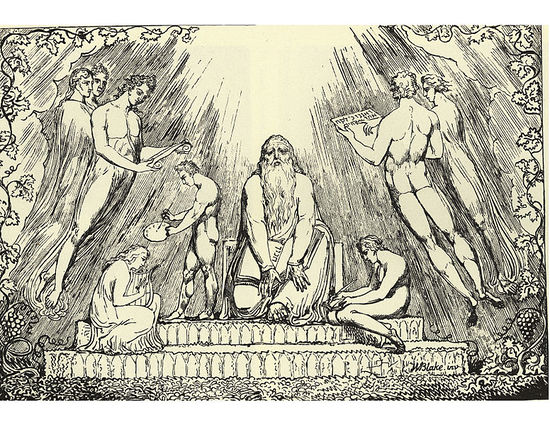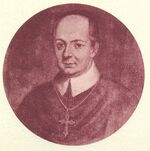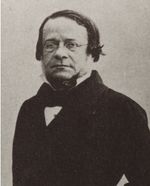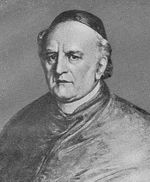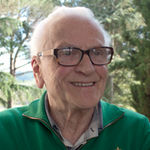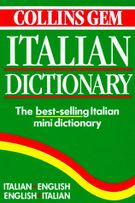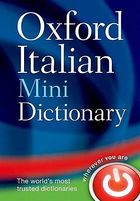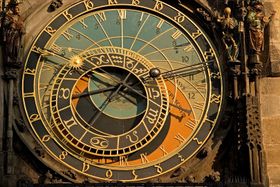Category:Enochic Studies--Italian
|
The category: Enochic Studies--Italian, includes scholarly and fictional works in Italian language dealing with Enochic Studies.
EIS (Italian) -- History of research -- Overview The interest in Enochic Studies first developed in Italy in esoteric circles during the Renaissance. In 1460 Cosimo de' Medici acquired the ms of the Corpus Hermeticum and in 1463 Marsilio Ficino completed its first translation. The Corpus Hermeticum, collected in the 11th century by Michael Psellos, was seen as a compendium of the most ancient human wisdom and was attributed to Hermes Trismegistus, who in turn was identified with Enoch. Philosopher Giovanni Pico della Mirandola and humanist Ludovico Lazzarelli represent the two souls of the movement, the former more scholarly-oriented toward the continuous search for manuscript evidence, the latter more engaged in magical and visionary experiences. The esoteric approach remained predominant in Italy in the 16th century. The attempt by Italian alchemist Giovanni Agostino Panteo in 1530 to a magical rediscovery of the Enochian Language had a follow-up in England with John Dee and Edward Kelley, The philological approach became predominant in Italy after the publication of the Enoch Fragments of Syncellus in 1606 by Italian-Dutch scholar Joseph Justus Scaliger. Scipione Sgambati, Pompeo Sarnelli and later, the young Daniele Manin published some of the earliest and finest commentaries on the Fragments. In 1775 Agostino Antonio Giorgi was asked by Card. Leonardo Antonelli to examine a manuscript of the Ethiopic text of 1 Enoch present in Rome. Giorgi recognized the importance of the document but no edition or translation of the documents were made. The modern study of 1 Enoch would start in England with the manuscripts brought there from Ethiopia by James Bruce in those same years. Only some decades later, Angelo Mai acquired the manuscript for the Vatican Library; Mai also published the editio princeps of a Greek fragment of 1 Enoch 89:42-49 he discovered at the Vatican Library. No Italian scholars contributed significantly to the early development of Enochic Studies. An Italian translation of the Ethiopic Enoch appeared only in 1908 by F. Feiers and E. De Giovanni. Only Jesuit Alfredo Vitti, professor at the Pontifical Biblical Institute, kept alive the interest on international studies on Enoch with some contributions in the 1930s, including an article in the Enciclopedia Italiana Treccani. The renaissance of Enochic Studies in Italy occurred in the late 1970s, and once again the two souls of the movement reemerged, the esoteric approach of Mario Pincherle and the philological approach of Paolo Sacchi. Turin University Professor Paolo Sacchi made 1 Enoch the center of his studies on Second Temple Judaism and became the catalyst of an Italian school in Enochic Studies. In 1979 he launched the journal Henoch and developed a theory that made to the Enochic concept of the origin of evil the generative idea of the Jewish apocalyptic tradition. In the 1990s his ideas were developed by his students Gabriele Boccaccini (in the United States) and Sabino Chialà (in Italy) and attracted the attention of international scholarship. In 2001 Gabriele Boccaccini inaugurated the first Enoch Seminar in Florence, Italy, followed in 2006 by the series of the Enoch Graduate Seminar and in 2009 by the launching of 4 Enoch: The Online Enciclopedia of Second Temple Judaism. Thanks mainly to the efforts of the Italian school, the concept of Enochic Judaism entered the vocabulary of international studies in Second Temple Judaism. In more than a decade of activity, the meetings of the Enoch Seminars have gathered international specialists in Enochic Studies and produced numerous publications and fostered the emergence of a new generation of Enochic Scholars, which in Italy is represented by Giovanni Ibba, Luca Arcari, Cristiana Tretti and Pierpaolo Bertalotto. @2014 Gabriele Boccaccini, University of Michigan
|
Cognate Fields (Italian)
|
Selected articles (Italian language)
1900s
- F. Feiers and E. De Giovanni. Il Libro di Enoc. In Rivista delle riviste 6 (1908) 297-319, 377-384, 412-419. < First Italian translation of 1 Enoch according to the Ethiopic text. >
1930s
- Emmanuele da San Marco. Il concetto di giustizia dell'Enoc etiopico e S. Paolo. In Biblica 18.3 (1937) 277-302; and 18.4 (1937) 383-417.
1980s
- Gabriele Boccaccini. E' Daniele un testo apocalittico? Una (ri)definizione del pensiero del Libro di Daniele in rapporto al Libro dei sogni e all'apocalittica. In Henoch 9 (1987) 267-302.
2000s
- Paolo Sacchi. Qumran e la datazione del Libro delle Parabole di Enoc. In Henoch 25 (2003) 149-166. < English ed.: Qumran and the Dating of the Book of Parables, in The Bible and the Dead Sea Scrolls (2006 Charlesworth), edited volume >
- Luca Arcari. Il Nachleben del testo greco di 1Enoc in alcuni scritti del cristianesimo antico: è esistita ’una’ traduzione greca di 1Enoc?. In Materia Giudaica 10.1 (2005) 57-72.
- Luca Arcari. Il libro delle Parabole di Enoc: alcuni problemi filologici e letterari. In Gesù e i Messia di Israele (2006 Guida/Vitelli), edited volume
- Luca Arcari. Il papiro gizeh: un testimone della tradizione enochica greca e altri testi ad esso collegabili. In Bibbia e Oriente 50.1 (2008) 3-77.
- Sabino Chialà. Violenza e giudizio divino nella letteratura enochica. In Ricerche Storico Bibliche 20.1-1 (2008) 111-122.
Pages in category "Enochic Studies--Italian"
The following 37 pages are in this category, out of 37 total.
1
- == == 1500s == == ==
- Orlando furioso (The Frenzy of Orlando / 1516 Ariosto), Italian poem
- Vite dei santi e beati del sacro ordine dei frati predicatori (1577 Razzi), book
- == == 1600s == == ==
- == == 1700s == == ==
- == == 1800s == == ==
- == == 1850s == == ==
- == == 1900s == == ==
- == == 1910s == == ==
- == == 1920s == == ==
- == == 1930s == == ==
- Ultime critiche su Enoc etiopico (1931 Vitti), essay
- Enoch (1932 Vitti), essay
- == == 1940s == == ==
- == == 1950s == == ==
- == == 1960s == == ==
- == == 1970s == == ==
- Il libro di Enoc (The Book of Enoch / 1977 Pincherle), arch-fi
- == == 1980s == == ==
- Apocrifi dell'Antico Testamento (1981-2000 Sacchi), edited volume
- == == 1990s == == ==
2
- == == 2000s == == ==
- Il libro dei santuari: Sefer hêkalôt (3 Enoch / 2000 Lacerenza), book
- L'orco (The Ogre / 2001 Enoch), graphic novel
- Oltre l'ipotesi essenica = Beyond the Essene Hypothesis (2003 Boccaccini / Bardi), book (Italian ed.)
- Enoch e la sapienza celeste (2007 Tretti), book
- I giudaismi del Secondo Tempio (2008 Boccaccini, Bardi) = Roots of Rabbinic Judaism (2002 Boccaccini), book (Italian ed.)
- == == 2010s == == ==
- La biblioteca di Qumran = La bibliothèque de Qumrân (The Library of Qumran / 2013- @2008- Berthelot, Legrand, Paul / Ibba), edited volume (Italian ed.)
- Le tre vie di salvezza di Paolo l'ebreo. L'apostolo dei gentili nel giudaismo del I secolo (2021 Boccaccini), book (Italian ed.)
Media in category "Enochic Studies--Italian"
The following 7 files are in this category, out of 7 total.
- 1710 * Sarnelli.jpg 128 × 224; 8 KB
- 1820 * Manin.jpg 138 × 200; 7 KB
- 1979 Zamorani.jpg 424 × 592; 20 KB
- 1990 * Sacchi.jpg 357 × 499; 22 KB
- 1997 * Chiala.jpg 320 × 500; 28 KB
- 2012 Arcari.jpg 333 × 499; 16 KB
- 2020 Arcari.jpg 329 × 499; 25 KB
